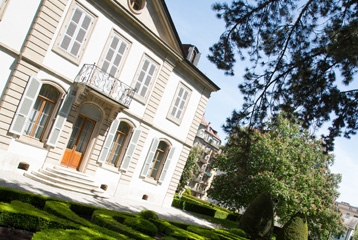The Saint-Jean Charmilles district only became urbanised with the construction of the railway at the end of the 19th century.
Development of the district: from the monastery to the trains
As early as the year 1000, Saint-Jean was home to a monastery – a place of pilgrimage. It was razed during the Reformation in 1535. At that time, important families shared the land, which remained something of a wilderness until the end of the 19th century. Only trails and two barely passable roads connected Saint-Jean to the city.
The urbanisation of the district came with the building of the railway. The cutting was excavated in 1857 with the demolition of the fortifications. Les Charmilles then became home to numerous factories and assumed a down-to-earth character associated with the working classes. In 1930, the sector was separated from the municipality of Le Petit-Saconnex to become part of the city.
The railway cutting created two separate zones: Saint-Jean and Charmilles. In the 1990s, the construction of the structure covering the CFF railway line was intended to create a walkway between the two zones to form a single district.
For a glimpse into the wilderness of the district’s past, you can take a walk along the Sentier des Falaises, which is one of the attractions of the district.
Voltaire in les Délices
There are a number of anecdotes relating to the district. Did you know, for example, that Voltaire lived here? Voltaire set up home here in 1755 in a property called “Sur Saint-Jean”, which he renamed les Délices. He set up a theatre there where plays were performed. The theatre, however, was prohibited in Geneva. In 1765, Voltaire therefore abandoned Les Délices and move across the border to Ferney.
The City purchased the property in 1929 and it became home to the Voltaire Institute and Museum.
What do “Saint-Jean” and “Charmilles” mean?
The church and monastery dedicated to Saint John the Baptist gave their name to the sector of Saint-Jean. The ruins of the priory are shown to their advantage by means of a promenade at the end of the Sous-Terre bridge.
The word “Charmilles” means a lane of hornbeams. These trees are often planted such that they form a shady tunnel.
Source:
Georges Turrian, Saint-Jean Charmilles: les temps changent, Yens-sur-Morges, 2000.
Article modifié le 02.03.2020 à 13:14

